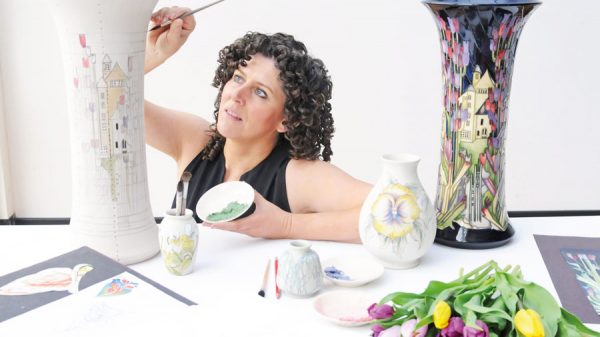Well, how would you describe the winter we have had? Not too bad you might say and you would be right in terms of the weather, cold and a little snow at times, occasional rain and the odd sunny day, but we expect that.
In comparison to previous years it has been quite mild and our plants clearly show that. I inadvertently left out a couple of pots of scented geraniums on my patio, in late January I thought I had lost them but on inspecting them last week there are some fresh green shoots appearing. I do however count myself very lucky as in a more severe winter they would not have survived. I have a small greenhouse that I line with bubble insulation and with a small electric fan heater I am able to keep it frost free at a very reasonable cost. The challenge is that in early spring when I start to sow and raise my half hardy annuals and vegetable plants space becomes an issue. It’s a balancing act with every square inch of the greenhouse crammed with plants at various stages.
But what if you don’t have a heated greenhouse or indeed a greenhouse at all? Well it does mean that you are limited to what you can accommodate but I have grown plants indoors on a sunny windowsill with great success. However don’t be tempted to use a room that is too warm as this may cause your plants to grow too quickly and become thin and spindly. Good light is essential and if you can provide a temperature of around 50F (10C) this will be fine for plants that are growing steadily. I have a heated windowsill propagator which has several trays with Perspex tops which are ideal for germinating seed and rooting cuttings. The critical issue with seedlings is when they first start to emerge; it might be the smallest of shoots, a loop of green or two big seed leaves. This stage in the growth of a seedling is the point at which it can spoil, too much warmth, and not enough light will cause them to become tall and lanky. This can happen in a couple of days and in some cases a few hours. As soon as you see the seed emerging take the cover off during the day and make sure the compost doesn’t dry out, at this stage water from below by placing the pot or tray in a dish of water for five minutes, put the cover back on during the evening and night. Watch out for sunny days and move the developing seedlings out of direct sunlight as this can cause them to fry or collapse.
Handling the resulting seedlings can be quite a tricky job too, once you see white roots emerging through the drainage holes of the pot or tray or when the first pair of seed leaves have completely unfurled and the second pair are visible its usually time to prick them out. It’s a strange term ‘Pricking out’ but simply means transferring them into a pot or larger tray to give them more space to develop. Make sure your pots or trays are clean and use fresh multipurpose compost, I don’t use last year’s compost for potting up young plant as the compost cam become sour and loose its nutrients, instead I use any old compost in the garden or for patio containers when planting up. When handling seedlings do not grasp them by the stem, instead hold one of the leaves gently and carefully ease the root system up using a ‘widger’ (Small spade like implement), taking care not to damage roots. If you are planning to pot up all the seedlings then it’s easier to gently tap the pot and its contents out onto the bench and tease the seedlings apart with a dibber. Fill a new pot with compost and make a hole with your dibber in the centre, large enough to accommodate all the roots, lower the seedling into the hole so that the seed leaves are level with the compost and tap the pot in the bench to settle the compost around the seedling.
Your newly potted plants will still need protection from the cold and good light to encourage strong growth, for half hardy plants it is unwise to plant out in the garden until all danger of frost has passed, generally after the second week in May.
If you have spring flowering shrubs that are becoming too big for their space, wait until the flowers have faded before you prune. The idea is to remove growth that is in the wrong place, hanging over a path or obstructing access. Take the opportunity to look at the shape of the plant and remove any branches that look unbalanced or awkward keeping in mind the space you have available. When pruning, try to adopt a style that thins the number of branches out rather than just cutting the whole thing like a lollipop. Feed of organic fertilizer pellets will help build up the plant for next spring and don’t forget to water in dry spells.
As you continue to tidy up and weed, make a note of any gaps that will need filling with annuals or perennials. Make a list of the type of plant, colour and height before you go searching. Nurseries and garden centres are great but I just love to visit the Harrogate Spring Flower Show (April 23rd – 26th) and can’t resist buying plants for the garden, it’s a great day out and really fires my enthusiasm for the forthcoming season.
Next month, Preparing for summer displays of annuals and looking after perennials, keep an eye on fruit.
(York Gate re-opens from 5th April until 30th September 2015, Sunday to Thursday, 1:30pm to 4:30pm)
Happy gardening,
York Gate Garden is owned and maintained by the charity Perennial (Gardeners Royal Benevolent Society) which provides advice help and support in times of need or difficulty for people who are working in, or have retired from any of the gardening trades. (Registered Charity no. 1155156). Opening times and further details can be found on our website at
www.perennial .org.uk






